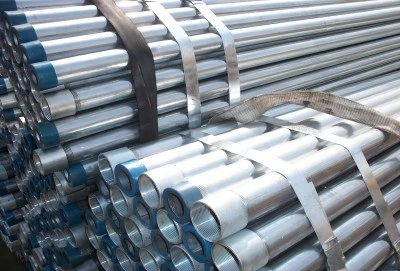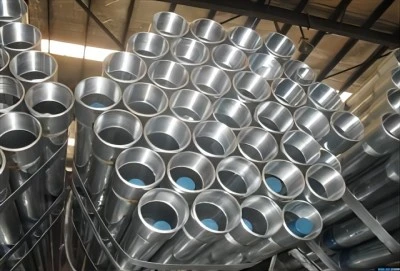In the world of steel pipe manufacturing, various standards and specifications govern the production and quality of pipes used in different applications. One such standard that has gained prominence in the industry is BS 1387. This blog post will delve into the intricacies of BS 1387 material, exploring its core composition, manufacturing processes, and compliance requirements. Whether you're a professional in the construction industry or simply curious about steel pipe standards, this comprehensive guide will provide valuable insights into BS 1387 pipes.
|
|
|
Core Material Composition of BS 1387 Pipes
BS 1387 is a British Standard that specifies the requirements for steel tubes, pipes, and fittings for general purposes. The core material composition of BS 1387 pipes is crucial in determining their performance and suitability for various applications. These pipes are typically made from mild steel, which is known for its excellent formability, weldability, and strength-to-weight ratio.
The primary alloying element in BS 1387 pipes is carbon, with a maximum content of 0.25%. This controlled carbon content ensures that the pipes maintain a balance between strength and ductility. Other essential elements in the composition include manganese (0.4-1.6%), silicon (0.10-0.35%), phosphorus (max 0.040%), and sulfur (max 0.040%). These elements work together to enhance the mechanical properties and corrosion resistance of the pipes.
One of the key features of BS 1387 pipes is their versatility. The carefully balanced composition allows these pipes to be used in a wide range of applications, from water supply systems to gas distribution networks. The material's strength and durability make it suitable for both indoor and outdoor installations, withstanding various environmental conditions and pressures.
It's worth noting that while the core composition remains consistent, slight variations may exist depending on the specific grade of BS 1387 pipe. For instance, the "Light" grade may have a slightly different composition compared to the "Medium" or "Heavy" grades, although all fall within the specified ranges of the BS 1387 standard.
Manufacturing Processes
The manufacturing process of BS 1387 pipes is as crucial as their composition in ensuring the final product meets the required standards. These pipes are typically produced using either the Electric Resistance Welding (ERW) or the Seamless process, depending on the desired specifications and end-use applications.
In the ERW process, steel coils are first unrolled and cut to the appropriate width. The strip is then formed into a tubular shape and welded along the seam using high-frequency electrical resistance welding. This process creates a strong, continuous weld that is as strong as the base metal. After welding, the pipe undergoes heat treatment to relieve internal stresses and improve its overall properties.
For seamless BS 1387 pipes, the manufacturing process begins with a solid steel billet. The billet is heated to a high temperature and then pierced to create a hollow tube. This tube is then rolled and stretched to achieve the desired diameter and wall thickness. The seamless process results in pipes with uniform properties throughout their cross-section, making them particularly suitable for high-pressure applications.
Regardless of the manufacturing method, all BS 1387 pipes undergo rigorous quality control measures throughout the production process. This includes dimensional checks, visual inspections, and various non-destructive tests to ensure the pipes meet the required specifications.
One of the key advantages of the BS 1387 manufacturing process is its ability to produce pipes with consistent wall thickness and diameter. This uniformity is crucial for applications where precise fitting and connection are essential, such as in plumbing systems or industrial piping networks.
Additionally, the manufacturing process for BS 1387 pipes incorporates surface treatments to enhance corrosion resistance. Galvanization is a common treatment, where a layer of zinc is applied to the pipe's surface, providing an extra barrier against rust and corrosion. This treatment significantly extends the lifespan of the pipes, particularly in environments where they may be exposed to moisture or corrosive elements.
Material Compliance and Testing for BS 1387 Pipes
Ensuring compliance with the BS 1387 standard is a critical aspect of the pipe manufacturing process. This compliance is verified through a series of rigorous tests and inspections that assess various properties of the pipes. These tests not only ensure that the pipes meet the required specifications but also provide assurance of their quality and reliability to end-users.
One of the primary tests conducted on BS 1387 pipes is the tensile strength test. This test measures the pipe's ability to withstand longitudinal stress and is crucial in determining its suitability for various applications. The standard specifies minimum tensile strength requirements for each grade of pipe, with values typically ranging from 320 to 520 MPa, depending on the grade.
Another essential test is the flattening test, which assesses the pipe's ductility and weld integrity. In this test, a section of the pipe is flattened until the distance between the plates is a specified percentage of the original outside diameter. The absence of cracks or breaks during this test indicates good ductility and weld quality.
Hydrostatic pressure testing is also a crucial part of the compliance process for BS 1387 pipes. This test involves filling the pipe with water and pressurizing it to a specified level for a set duration. The pipe must withstand this pressure without showing any signs of leakage or failure. This test is particularly important for pipes intended for use in pressurized systems.
In addition to these mechanical tests, dimensional checks are carried out to ensure that the pipes meet the specified tolerances for outside diameter, wall thickness, and length. These measurements are critical for ensuring proper fit and function in various applications.
Chemical analysis is another crucial aspect of material compliance. Samples from each batch of pipes are analyzed to verify that the chemical composition falls within the specified ranges for each element. This analysis ensures consistency in the material properties and performance of the pipes.
It's important to note that compliance with BS 1387 also extends to the marking and identification of the pipes. Each pipe must be clearly marked with information such as the manufacturer's name or trademark, the standard designation (BS 1387), and the grade (Light, Medium, or Heavy). This marking ensures traceability and helps users identify the appropriate pipes for their specific applications.
Furthermore, many manufacturers of BS 1387 pipes go beyond the basic requirements of the standard and implement additional quality control measures. These may include non-destructive testing techniques such as eddy current testing or ultrasonic inspection to detect any internal defects or inconsistencies in the pipe wall.
Since 2003, LONGMA GROUP has been a key player in China's steel pipe industry, achieving remarkable success. By the end of 2023, our annual output had surpassed one million tons. Our BS 1387 pipes are of exceptional quality, with outer diameters ranging from 3/8" to 18", thicknesses from SCH10 to SCH160, and we maintain a stock quantity of 10-50 tons, along with an annual production capacity of 50-100 tons. If you're interested in our 1387 pipes or have any questions about their specifications and applications, we invite you to reach out to us. Our team of experts is ready to assist you and explore how our high-quality pipes can meet your specific needs. Contact us at info@longma-group.com to start a conversation about your steel pipe requirements. We look forward to the opportunity to build a fruitful business relationship with you, providing you with top-notch pipes that meet and exceed industry standards.














